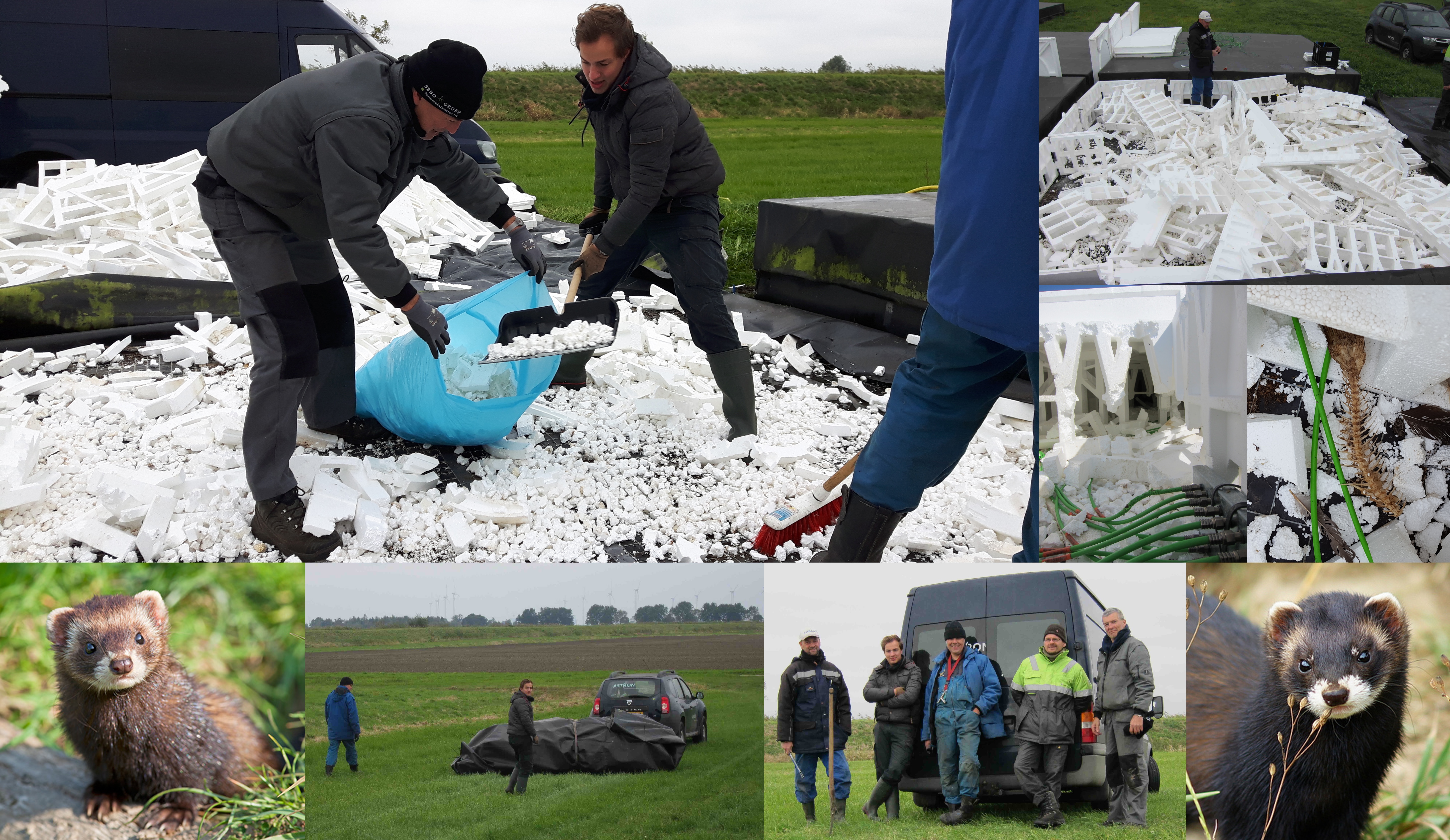 © IBM/ASTRON
© IBM/ASTRON
The day started with an excellent small symposium on the subject of Rik's thesis. He then preceded his defence by a clear 10 minute overview for a general audience, of the challenges of the next generation of giant radio telescopes, in particular limiting the power consumption by the data processing system. The committee then subjected him to some close questioning, but he stood firm as you can see in the picture above.
Four years ago, Rik started as the first IBM-Dome PhD student, or predoc in IBM speak, at the ASTRON & IBM Center for Exascale Technology in Dwingeloo. Rik quickly became an important link between the technology at the IBM Zurich research labs, and the technical challenges faced by ASTRON in (co-) developing the Square Kilometre Array via contributions to the different SKA engineering consortia.
With his easygoing and thorough style, he started to model and analyse the SKA designs in order to pinpoint those aspects that require the most processing, and thus electrical power, and thus cost. For a system that is "exascale", or in other words requiring up to 1.000.000.000.000.000.000 operations per second, the answers certainly helped the engineers to improve their designs.
His core contribution to SKA is the development of a tooling set, including an application-specific (SKA) model, and processor performance models. With this tooling set it is possible to very quickly assess the processing cost of many different SKA architectures. The holistic analysis tool itself is nearing its completion, and also has a big potential outside the SKA context. In addition to this, Rik also contributed to many other topics, such as taking part in the design of application-specific chips (ASICs) for the SKA station processors.
A sizeable contingent of DOME and ASTRON colleagues had made the long journey to Eindhoven to cheer him on. We all congratulate Rik with this excellent personal and professional milestone.
Editor's note: The robed gentleman with the magnificent chain on the right is Prof Bart Smolders, another ex-ASTRON employee who has risen high in the world.
 © R.H. van den Brink
© R.H. van den Brink © Helen Schat-Hansen
© Helen Schat-Hansen © JvL/DK
© JvL/DK © A.-K. Baczko et al. 2016, A&A, 593, A47
© A.-K. Baczko et al. 2016, A&A, 593, A47 © Albert van Duin
© Albert van Duin © P.M.Fusiara
© P.M.Fusiara © Betsey Adams
© Betsey Adams © ASTRON
© ASTRON © astron
© astron © (c) Astron 2016
© (c) Astron 2016 © Gert Kruithof
© Gert Kruithof © Madroon Community Consultants (MCC)
© Madroon Community Consultants (MCC) © ASTRON
© ASTRON © ASTRON
© ASTRON © FAME team
© FAME team © ASTRON, University of Manchester, CISCO, NOKIA
© ASTRON, University of Manchester, CISCO, NOKIA © 2016 Rob Millenaar
© 2016 Rob Millenaar © Astron
© Astron © Kadler M, Krauss F et al., Nature Physics 12, 807
© Kadler M, Krauss F et al., Nature Physics 12, 807